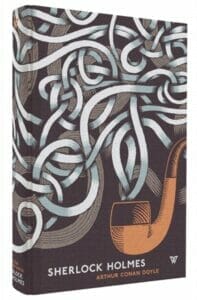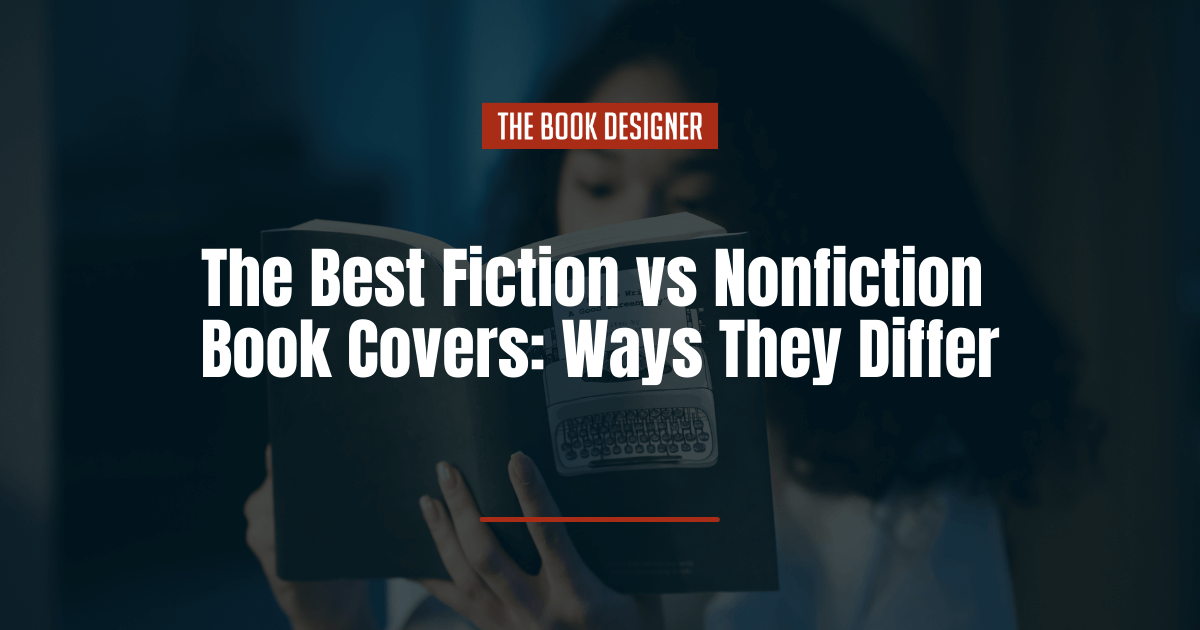In the vibrant world of book publishing, the first thing that comes to mind, I’m sure, when any of us think of design is the book cover! It’s the main element of any fiction or nonfiction piece that immediately turns heads and makes a statement all at once.
It’s worth noting that there are subtle distinctions when it comes to fiction vs nonfiction book covers. While nonfiction books focus on displaying useful and persuasive information on the front (think autobiographies and history books), fiction books can be a lot more expressive with colors, fonts, imagery and so on.
First impressions always count, right? So, let’s dive into those key elements of both fiction and non-fiction book covers that really make it a visual treat for your audience.
In this article about fiction vs nonfiction book covers, we’ll examine:
Fiction vs Nonfiction Book Covers: The Big Difference
Fiction and nonfiction book covers have very different missions to accomplish, and recognizing these different paths is the first step to crafting the perfect introduction to your work.
Fiction Book Covers:
Imagination, mystery, and the alluring call to a different world; these are the hallmarks of a compelling fiction book cover.
With the main aim being to reflect the book’s tone and genre and to evoke curiosity, these covers often leave a lot to the imagination. The design elements are less restricted, urging readers to delve deeper and discover the story within.
You’ll find that titles are concise and descriptions are almost non-existent, allowing the visual elements to play a more significant role in persuading readers to pick it off the shelf.
Nonfiction Book Covers:
On the flip side, nonfiction book covers adopt a more straightforward approach, serving readers a clear picture of what to expect inside.
This no-nonsense approach consists of a rich spread of information, longer titles with descriptive subtitles to offer readers a clear snapshot of the valuable insights awaiting them. While the storytelling element takes a backseat, the design leans towards minimalism with a preference for neutral tones, creating a clean and focused entry point that prioritizes information and clarity over mystery.
Understanding these foundational differences is pivotal in crafting a cover that not only resonates with your target audience but beautifully houses the heart of your literary masterpiece!
What Readers Expect: Nonfiction Book Cover Design Elements
Understanding your audience’s expectations is a cardinal rule in book cover design. Let’s delve into what readers anticipate when they pick up a book from either genre:
Nonfiction Book Covers:
A nonfiction book cover must reflect the substantial and educative content it houses. It needs to exude a sense of authority and expertise, promising the reader a journey of learning and growth. Here are the key elements to focus on:
- Detailed Titles and Subtitles: Go for long titles and accompanying subtitles that lucidly convey the book’s essence, offering a clear insight into what the reader can expect.
- Minimalistic Graphic Elements: Stick to a linear and rational theme with minimal graphics to maintain a focused and serious demeanor.
- Bold and Formal Typography: Employ typography that is both bold and formal, facilitating easy readability while also commanding respect and attention.
- Centered Messaging: Place the central message or title in the direct eyeline to instantly grab attention and convey the core theme succinctly.
- Volume and Version Details: If applicable, include details like volume number and version to offer readers a sense of the book’s place in a series or its updated content.
- Neutral Color Palette: Leverage a palette grounded in neutral tones, avoiding vibrant hues that might potentially diminish the gravity of the topic at hand.
By embracing these elements, you craft a cover that meets the reader’s expectation of a resourceful and enlightening read, perfectly setting the stage for the wealth of knowledge that lies within.
Here’s a few example of nonfiction book covers that we’d recommend drawing inspiration from:
The Big Short by Michael Lewis

Master Your Sleep by Tracey I. Marks, MD

World-Building for Writers by H.C. Harrington:

What Readers Expect: Fiction Book Cover Design Elements
Crafting the perfect cover for a fiction book comes with a lot of freedom to play, to imagine, and to lure your readers into the world you’ve crafted within the pages. Think of it like an open canvas It’s an open canvas where you can illustrate your story through vivid imagery, bold colors, and evocative typography. Let’s explore the design elements that can help your fiction book cover become an irresistible pick:
- Strategic Color Scheme: While the spectrum of colors is wide, it’s wise to narrow down your choice to up to three complementary colors that echos your book’s tone, genre, and essence. Use these chosen hues not just in the backdrop but also in the titles to create a harmonized visual appeal.
- Creative Visual Imagery: Whether it’s unveiling the mysterious protagonist of your sequel to evoke a sense of familiarity or crafting bespoke illustrations, leveraging visual imagery allows you to strike a chord with your audience right from the first glance.
- Title Readability: Amidst the expected noise of colors and visuals, ensure that your book title remains the hero. It should be easily conveyed, inviting readers to delve deeper into the story that awaits.
- Dual Typeface Play: Play around with a dual typeface strategy where the main title and the supplementary information like the author’s name are rendered in distinct but complementary fonts, enhancing visual interest and hierarchy.
- Background Storytelling: Your background is not just a canvas but a storyteller. Think of it as a preview of the genre, For example, darker visuals for action-packed mysteries or a serene landscape for a heartwarming tale.
Embrace the creative freedom that fiction book cover design offers and craft a visual narrative that is as captivating as the story inside!
Here are some examples of fiction book covers we’d recommend taking some inspiration from:
Riders of the Storm by Clara Coulson

Clap When You Land by Elizabeth Acevedo

Sherlock Holmes by Sir Arthur Conan Doyle

Fiction vs Nonfiction Book Covers: Summary
Crafting the right cover for your book, whether fiction or non-fiction, isn’t just an artistic endeavor; it’s a strategic move to reach and resonate with your target audience.
For non-fiction works, the spotlight is on clearly conveying the value and expertise enclosed within the pages, using neutral color palettes, formal typography, and informational subtitled to relay the book’s core message. It’s about building a bridge of trust and expectation with potential readers.
On the other hand, fiction book covers are like an open canvas to tease readers’ imaginations, inviting them into a world of stories by utilizing strategic color schemes, creative imagery, and bold backgrounds that echo the narrative’s heart.
If you’re venturing into the self-publishing realm and need a guiding hand in bringing your book cover vision to life, you’re in the right place! Feel free to explore our resources or get in touch for personalized assistance. Happy designing!


